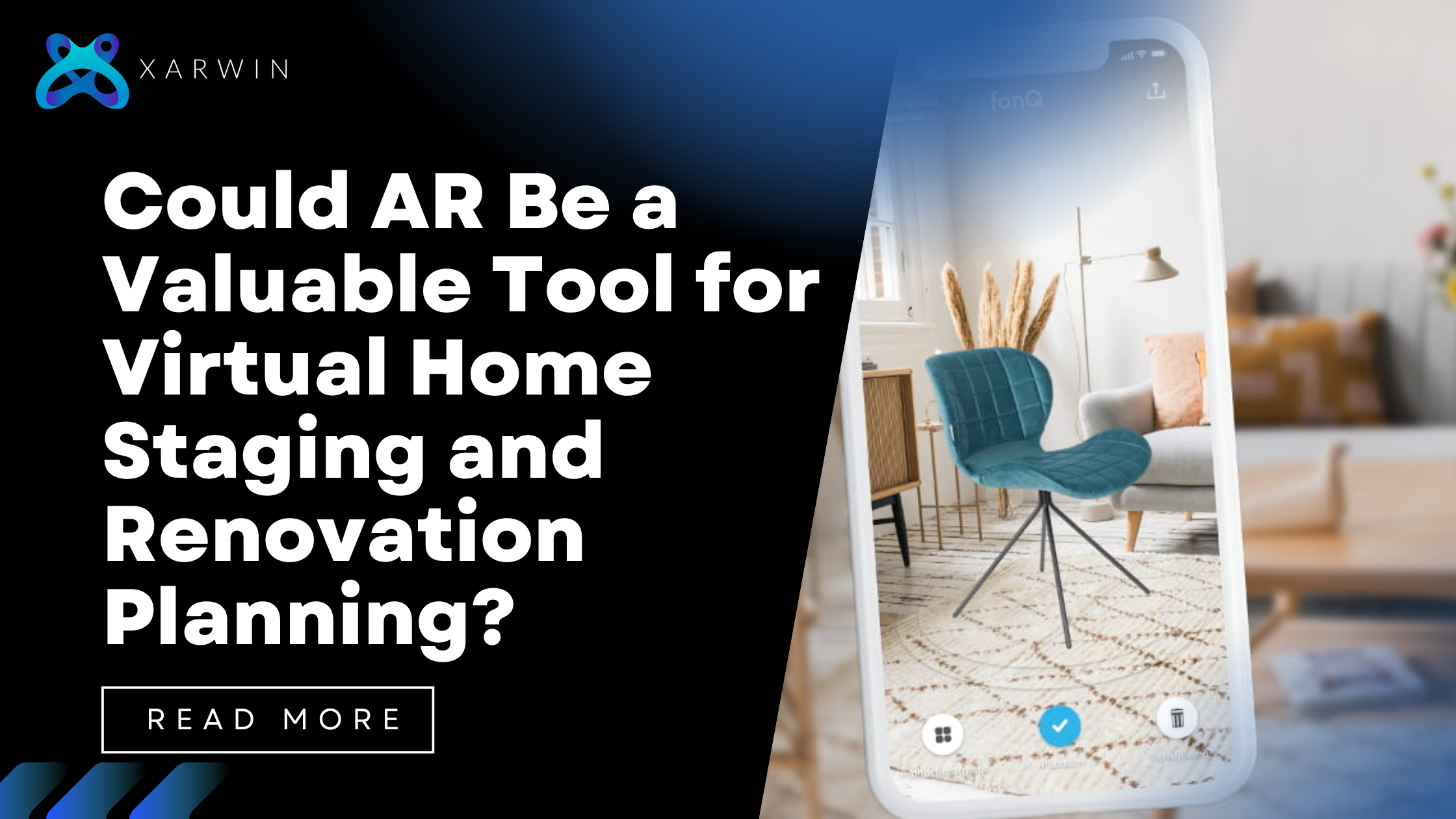Are you looking to take your business to the next level? Augmented Reality (AR) apps may be the solution you’re looking for! AR apps offer an interactive and immersive experience to customers, allowing them to engage with your products and services in a unique way.
Augmented Reality Apps for Business
Before we dive into the process of building an AR app, let’s start with the basics. AR refers to the integration of digital information into the physical world. AR apps use the camera on a smartphone or tablet to overlay digital information onto the user’s view of the real world.
AR apps have numerous benefits for businesses, including increased engagement, enhanced customer experiences, and the ability to showcase products in a unique and interactive way.
There are different types of AR apps, such as marker-based, markerless, and location-based, each with their own benefits and drawbacks. No-code development platforms allow businesses to create AR apps without any coding experience, making it accessible to anyone.
Defining Your AR App’s Objectives and Features
Defining Your AR App’s Objectives and Features refers to the process of identifying the goals and functionality of an Augmented Reality (AR) application before it is designed and developed.
This involves determining what the app should do, what problems it should solve, and what features it should have to meet the needs of its intended users. Here are some steps to follow when defining your AR app’s objectives and features:
Identify your target audience
Identifying your target audience is the first step in defining your AR app’s objectives and features. Understanding who your app is for will help you determine what features and functionality to include, as well as how to design the user experience. Consider demographics such as age, gender, and location, as well as psychographics such as interests and behaviors.
Define your app’s purpose and goals
Once you’ve identified your target audience, the next step is to define your app’s purpose and goals. What problem does your app solve? What value does it provide to users? What are the business objectives of the app? Answering these questions will help you determine what features and functionality to include in your app.
Outline key features and functionality
After defining your app’s purpose and goals, the next step is to outline the key features and functionality that will help you achieve those goals. Consider the types of AR features you want to include, such as image recognition, markerless AR, and geolocation AR. Think about the user experience and how users will interact with the app.
Create a user experience (UX) strategy
Creating a user experience (UX) strategy is also important to ensure that your app is easy to use and provides value to your customers. This involves designing the app’s interface and interaction patterns, as well as considering accessibility and usability factors. The UX strategy should be informed by user research and testing.
By following these steps, you can define your AR app’s objectives and features and ensure that it meets the needs of your target audience.
Choosing a No-Code AR App Development Platform
Choosing a no-code or QR code Augmented Reality app development platform refers to selecting a software tool that allows users to create augmented reality (AR) applications without needing to write code. This type of platform typically provides a graphical interface for designing and building AR experiences using pre-built components and templates.
There are several no-code development platforms available for building AR apps, each with its own features and pricing.
When selecting a no-code development platform, it’s important to evaluate the platform’s features, ease of use, and compatibility with your business goals. Consider the type of AR app you want to create for the web-based experiences, the target audience, and the budget when making a decision.
Features to Look for in a No-Code AR App Development Platform
When selecting a no-code development platform for your AR app, here are some features to look for:
- Easy-to-use interface: Look for a platform with a drag-and-drop interface and pre-built templates to make app creation easy.
- AR tools: Consider the type of AR features you want to include in your app, such as image recognition, markerless AR, and geolocation AR.
- Analytics: Look for a platform that provides analytics to track app usage and performance.
- Customization options: Consider the ability to customize the app’s branding and user interface to match your business’s brand.
By selecting the right no-code development platform and evaluating its features, businesses can create a high-quality AR app without any coding experience required.
Content Creation for Your AR App
Gathering and Organizing Digital Assets
- Collect 3D models, animations, and videos for use in the AR app
- Consider the quality of the assets, as high-quality assets can enhance the user experience and create a more immersive environment
- Consider creating new assets to ensure that the AR app is unique and engaging
Optimizing and Preparing Assets for Integration
- Reduce file sizes to improve app performance
- Adjust lighting and colors to ensure that assets appear correctly in the AR environment
- Ensure that assets are compatible with the chosen development platform
- Optimize assets for performance and load times
By following these steps, businesses can ensure that their digital assets are optimized and ready for integration into the AR app, providing a high-quality experience for users.
Building Your AR App with a No-Code Platform
Here are the steps to follow when building an AR app with a no-code platform:
- Create a project and set up the AR app environment.
- Import and place your digital assets in the app.
- Configure AR interactions, triggers, and animations.
- Customize the user interface (UI) and branding elements.
- Test and preview your AR app on compatible devices.
Following these steps will allow you to build your AR app with a no-code platform easily and efficiently.
Publishing and Distributing Your AR App
To publish and distribute your AR app, follow these steps:
- Review app store requirements and guidelines: Each app store has its own set of requirements and guidelines for submitting apps. Review them carefully before submitting your AR app.
- Create app icons, screenshots, and descriptions: Prepare your AR app for submission by creating app icons, screenshots, and descriptions. These assets should be designed to attract and inform potential users about your app.
- Upload and submit your AR app: Once you’ve prepared your assets, upload and submit your AR app to relevant app stores. Be sure to follow the submission process carefully and provide all required information.
- Promote and market your AR app: After your app has been published, it’s important to promote and market it to your target audience. This can include social media campaigns, email marketing, and paid advertising.
Importance of Monitoring and Updating Your AR App
Regularly monitoring and updating your AR app is crucial for ensuring its success. Here are some reasons why:
Improve App Performance
Monitoring app usage metrics can help identify issues that users are facing, such as bugs or crashes, which can then be addressed and resolved. Analyzing data can also provide insights into how users interact with the app, which can inform future updates and improvements.
By improving app performance, businesses can ensure that users have a positive experience and are more likely to engage with the app in the future.
Data-Driven Improvements
By analyzing user feedback, businesses can make data-driven improvements to their AR app. User feedback can provide valuable insights into what users like and dislike about the app, as well as suggestions for new features or improvements.
This feedback can be collected through in-app surveys, feedback forms, or social media. By taking user feedback into account, businesses can ensure that their app meets the needs of their audience and provides value to their users.
Keep Customers Engaged
Regularly updating your AR app with new features and content can help keep customers engaged and interested in your business. By providing fresh and relevant content, businesses can keep users coming back to the app and increase the likelihood of repeat engagement.
This can also help attract new users and improve user retention. By keeping the app up-to-date, businesses can demonstrate their commitment to providing a high-quality experience for their users.
How to Monitor and Update Your AR App
Here are some steps to follow when monitoring and updating your AR app:
Monitor App Usage Metrics
Use analytics tools to track key metrics such as app downloads, user engagement, and user retention. Use this data to identify areas for improvement and track the success of updates and improvements.
Some popular analytics tools for mobile apps include Google Analytics, Mixpanel, and Firebase Analytics.
Collect User Feedback
Collect feedback from users through in-app surveys or feedback forms. Use this feedback to identify areas for improvement and inform future updates. Encourage users to provide feedback by offering incentives or making it easy to do so.
Consider using social media or email to gather feedback from users who may not be actively using the app.
Regularly Update Your App
Regularly release updates and new content to keep your app fresh and engaging. Use user feedback and app usage metrics to inform the updates you make. Consider using an agile development approach to quickly iterate on new features and improvements.
Use beta testing to gather feedback from a smaller group of users before releasing updates to the entire user base.
Address Bugs and Issues
Address any bugs or issues that users are facing as quickly as possible. This can help prevent users from becoming frustrated or losing interest in the app. Use crash reporting tools to identify issues that users are experiencing and prioritize fixing them. Communicate with users about the steps you are taking to address issues and provide updates as they become available.
Improve User Experience
Continuously improve the user experience of your app by making it easy to use and providing value to users. Use user feedback and app usage metrics to identify areas for improvement.
Consider conducting user testing to get feedback from real users about the app’s usability and design. Use design best practices to create an intuitive and visually appealing app.
By following these steps, businesses can ensure the success of their AR app and continue to provide value to their customers. Regularly monitoring and updating the app can help improve app performance, make data-driven improvements, keep customers engaged, and improve the overall user experience.
Conclusion
Building an AR app may seem daunting, but with the right tools and resources, it’s accessible to anyone. Augmented Reality on the web is changing the way businesses interact with their customers. By leveraging AR technology, businesses can enhance customer experiences, drive innovation, and ultimately grow their business.
As a trailblazer in augmented reality (AR), Xarwin combines innovation with a user-centric approach to redefine industry standards. Its team of expert engineers, designers, and strategists excels in crafting immersive AR experiences across various sectors. With each project, the company not only meets current demands but also shapes future trends, establishing itself as a leading force in the AR landscape.





